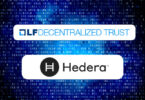Today Hyperledger, part of the Linux Foundation announced its latest enterprise blockchain project, Hyperledger Grid. The initiative is a framework that provides a set of tools particularly suited to supply chain blockchains. The main sponsors are agribusiness company Cargill and two of the maintainers of the Hyperledger Sawtooth blockchain protocol, Intel and Bitwise IO. This is the first project focused on a particular industry.
Many people associate Hyperledger with Hyperledger Fabric. But in fact, there are three Hyperledger blockchain protocols – Fabric, Sawtooth and Iroha – and eight other blockchain related projects covering identity, interoperability, smart contracts and other topics.
Grid’s traceability code uses the Sawtooth blockchain and is based on the Sawtooth supply chain code, but the team ultimately wants broad compatibility. James Mitchell, a Principal Consultant at Bitwise, commented on a Grid chat forum: “In the spirit of other top-level projects like Explorer and Composer, we welcome contributions to support compatibility with the entire Hyperledger greenhouse.”
The project is not an application. Instead, the tools consist of libraries, data models and a software development kit for developing supply chain smart contracts and client interfaces. It uses the WebAssembly smart contract engine Sabre.
One of the first steps on the roadmap is product models such as the GS1/GTIN standards.
Dan Middleton from Intel introduced the project at December’s Hyperledger Global Forum.
Moving up the food chain
Traditionally open-source projects cover fairly deep technologies such as operating systems, network protocols, web servers and databases. The layer above that is middleware and the top end usually covers applications and user interfaces. Grid is industry focused middleware.
At a TechCrunch conference last year Brian Behlendorf, Hyperledger’s Executive Director described his organic vision of how the ecosystem might evolve: “[Ethereum’s] Solidity is not the last smart contract language. We’ll start to see apps built on top of those. We’ll see a library to do trade finance, a library to do health care records.”
“A library to do the kind of things that are uniquely enabled by this different approach now to blockchain technology; coming in as projects. And our goal is [to] provide the substrate for it, provide the augur that they can come in and grow within.”
“And either they succeed in the market, or if they don’t, then we’ve created a lot of interesting biological material for the next project. There are no failures, there are only projects that go so far, and then become mulch for the next one.”
Software mimics business as a whole. Some offerings in the early stages are innovative and competitive differentiators. As everyone catches up, those same features are later viewed as generic or commoditized.
“If you’re building a proprietary app on top of an open-source series of layers, you’re always watching what that horizon is,” Brian Behlendorf told Ledger Insights last year. “Because you don’t want to wake up one morning and discover somebody has open sourced something that now you have to be competing against. Competing against free is bad. Competing against free and collaborated upon by all of your competitors is even worse.”
Cargill
Talking of food chains, Cargill is one of the world’s largest agribusiness companies, and the largest privately owned company by revenue in the U.S. In the year to 31 May 2018 it reported $114.7 billion in revenues and $3.2 billion in earnings. And it already has quite a bit of activity in the blockchain sphere.
It’s part of a new agribusiness consortium that aims to digitize agribusiness trade using blockchain and AI. The group is nicknamed ABCCD based on their names: Archer Daniels Midland, Bunge, Cargill, COFCO and Dreyfus (Louis Dreyfus Group). The companies have combined revenues of $274 billion.
Early last year Cargill participated in a Letter of Credit pilot for the Voltron trade finance project. It involved a shipment of soya beans from Argentina to Malaysia and HSBC and ING were the banks involved.






